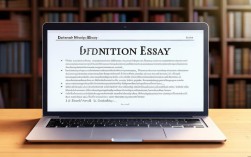Argumentative essays require presenting balanced viewpoints while persuading readers toward a reasoned conclusion. When addressing a topic like mobile phone advantages and disadvantages, structure, evidence, and clarity become essential. This guide explores how to craft a compelling English essay on this subject while maintaining strong E-A-T (Expertise, Authoritativeness, Trustworthiness) principles for better search engine visibility.

Understanding the Argumentative Essay Structure
A well-organized argumentative essay follows a logical progression:
-
Introduction – Begin with a hook to engage readers, such as a surprising statistic ("Over 6.6 billion people use smartphones globally") or a thought-provoking question. Clearly state your thesis, which should reflect a nuanced stance, e.g., "While mobile phones enhance connectivity and productivity, excessive use poses risks to mental health and privacy."
-
Body Paragraphs – Divide arguments into sections, typically three to five paragraphs. Each should focus on one key point, supported by credible sources. For instance:

- Advantages: Instant communication, access to education, emergency assistance.
- Disadvantages: Distraction, privacy concerns, social isolation.
-
Counterarguments – Address opposing views to strengthen credibility. For example, acknowledge that while phones improve efficiency, studies show they reduce face-to-face interaction skills.
-
Conclusion – Reinforce the thesis without repetition. End with a forward-looking statement, such as how mindful usage can maximize benefits while minimizing drawbacks.
Selecting Strong Evidence
To establish authority, incorporate:

- Statistics: Cite research from Pew Research Center or Journal of Behavioral Addictions.
- Expert Opinions: Quote psychologists on screen time effects or tech innovators on device utility.
- Real-World Examples: Discuss apps like Duolingo for learning or cases of cyberbullying.
Avoid anecdotal evidence unless paired with data. For instance, instead of saying "Many people waste time on phones," use "A 2023 study found average users spend 4.8 hours daily on non-essential apps."
Enhancing Readability for Online Audiences
- Subheadings – Break sections into digestible parts, like "Educational Benefits" or "Health Implications."
- Bullet Points – Use lists to highlight key pros and cons.
- Transitional Phrases – Words like "Conversely" or "Moreover" improve flow.
- Concise Language – Replace complex terms with simpler alternatives ("use" instead of "utilize").
Balancing Perspectives
Avoid extreme positions. Instead of labeling phones as purely good or bad, analyze context:
- Productivity: Phones enable remote work but may blur work-life boundaries.
- Social Impact: They foster global connections yet contribute to loneliness.
Optimizing for E-A-T
- Author Credentials – Mention your experience as a website owner or cite your research process.
- Reliable Sources – Link to .edu or .gov studies rather than unverified blogs.
- User-First Tone – Write conversationally but authoritatively, avoiding jargon unless defined.
Common Pitfalls to Avoid
- Overgeneralization: Not all screen time is harmful; differentiate between passive scrolling and active learning.
- Ignoring Nuance: Acknowledge regional differences—phones benefit rural areas with limited internet access differently than urban users.
- Weak Citations – Phrases like "experts say" lack credibility; name specific researchers or institutions.
Final Draft Tips
- Proofread: Errors undermine authority. Tools like Grammarly can help.
- Engage Readers: End with a question ("How will you balance phone usage in your daily life?") to encourage comments or shares.
Mobile phones, like any tool, reflect how society chooses to wield them. By presenting a fair, well-researched analysis, your essay can guide readers toward informed decisions—ultimately fulfilling the purpose of both education and responsible discourse.












